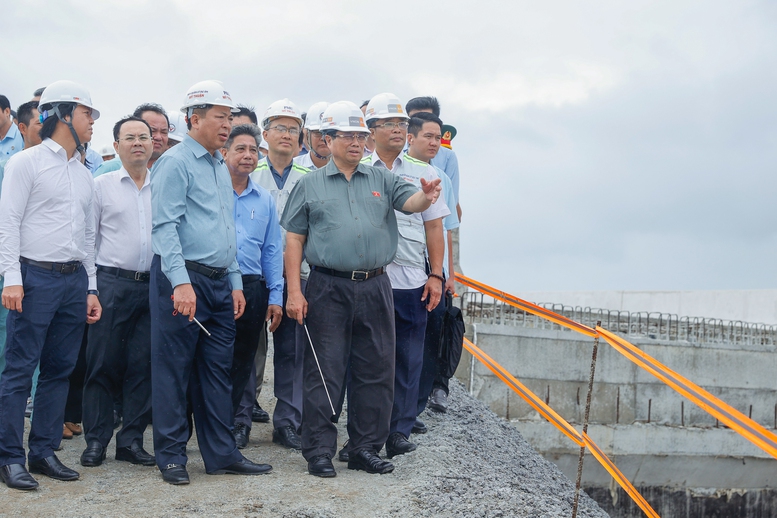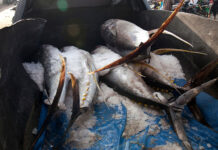On Track for Completion: Vietnam’s North-South Expressway to Be Fully Operational by 2025
On December 15, Prime Minister Pham Minh Chinh inspected and reviewed the progress of the Can Tho – Ca Mau Expressway project, a crucial component of the North-South Expressway.
The Can Tho – Ca Mau Expressway, with a total investment of VND 27,500 billion, is the final stretch of the North-South Expressway’s eastern route, spanning over 730 km. The project, which broke ground on January 1, 2023, is slated for completion by December 31, 2025, marking a significant milestone in Vietnam’s transportation infrastructure development.
Maintaining the deadline for this project holds immense importance. It will connect the entire country from north to south, opening up new avenues for development and fostering connections between localities in the three regions of Vietnam. Additionally, its timely completion will inspire and motivate the successful execution of other critical projects scheduled for completion in 2026 and beyond.

Prime Minister emphasizes the unwavering deadline of December 31, 2025, for the completion of the North-South Expressway. Photo: VGP/Nhat Bac
The Can Tho – Ca Mau Expressway comprises a main route exceeding 110.85 km and a 25.85 km connector, divided into two components: the Can Tho – Hau Giang section and the Hau Giang – Ca Mau section. The project is under the management of the My Thuan Project Management Unit (Ministry of Transport) and is on track with remarkable progress.
Specifically, land clearance has been accomplished in full for the main route (110.8 km), and substantial progress has been made on the connector, with only 200 meters left to be addressed in Can Tho city. Contractors have mobilized 234 construction units, 971 equipment pieces, and 3,000 workers, operating in three shifts to ensure productivity meets 55%/61% of the plan.
Regarding sand filling, 11.8 million cubic meters out of the required 15.2 million cubic meters for 2024 have been delivered to the site, leaving a deficit of 3.4 million cubic meters. Cumulative disbursement has reached VND 14,353 billion out of VND 14,766 billion (97%), and VND 5,831 billion out of VND 6,356 billion has been disbursed this year (92%), aligning with the planned schedule.
In his concluding remarks, the Prime Minister firmly stated that there should be no changes to the deadline. He emphasized that the completion of the Can Tho – Ca Mau project by December 31, 2025, and the subsequent full operation of the North-South Expressway from Cao Bang – Lang Son to Ca Mau, is a heartfelt command, a necessity for the country, and an expectation of the people.



A bustling construction site: The Can Tho – Ca Mau Expressway project is well underway. Photo: VGP/Nhat Bac
Plans to Extend the Expressway from Ca Mau City to Dat Mui Underway
Following the inspection of the Can Tho – Ca Mau Expressway, the Prime Minister instructed relevant ministries, sectors, and local authorities to study the extension of the expressway from Ca Mau City to Dat Mui (approximately 80 km). The Ca Mau province will take charge of the implementation with central support and funding, aiming for groundbreaking in the coming year.
Previously, the Road Department proposed adding the Ca Mau – Dat Mui route to the new planning, spanning about 90 km with a four-lane scale. This proposal is envisioned for post-2030 investment.
According to forecasts, the Ca Mau – Dat Mui section is expected to handle 18,300-20,100 car equivalents per day by 2030, necessitating the construction of a four-lane expressway to match the scale of the Can Tho – Ca Mau section.

The North-South Expressway will extend to the tip of Ca Mau. Photo: Ca Mau Tourism
As per the plan, the Ca Mau – Dat Mui Expressway will run parallel to National Highway 1 and the Ho Chi Minh Road until it reaches Rach Goc town and eventually Dat Mui in Ngoc Hien district. This alignment aims to capitalize on the advantages of the future Hon Khoai International Seaport.
Together with the east-west axis roads, the Ca Mau – Dat Mui Expressway will serve as a pillar for the development of the marine economy, harnessing the potential and strengths of the southernmost region of the country, while also solidifying national defense and security.
In reality, the need for development, especially in harnessing the potential of the Ca Mau National Tourism Area, is evident. The construction of this expressway will reduce travel time by almost a third compared to the current smaller, narrower routes of National Highway 1 and the Ho Chi Minh Road, which experience high traffic volumes.
Thai Ha








































